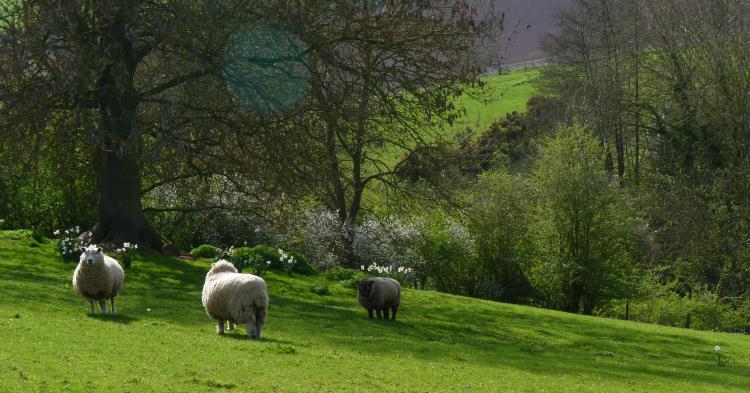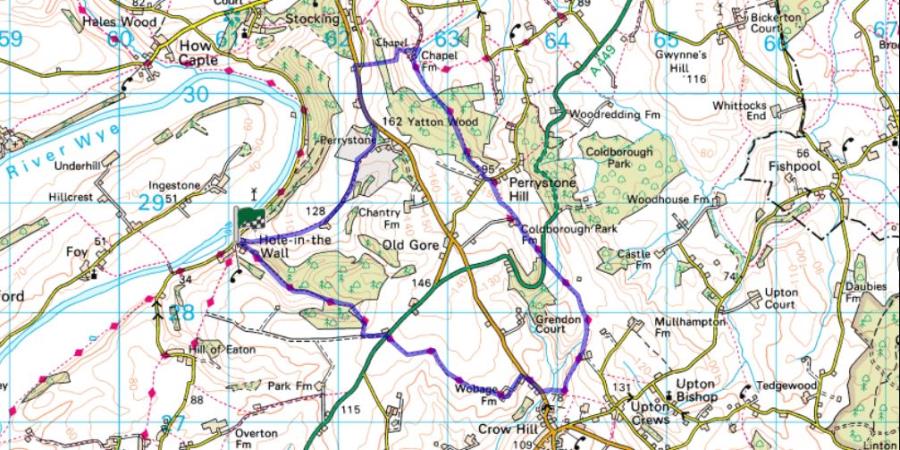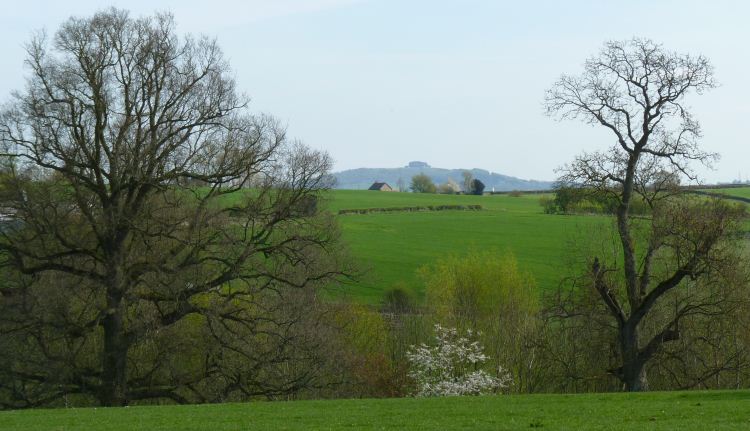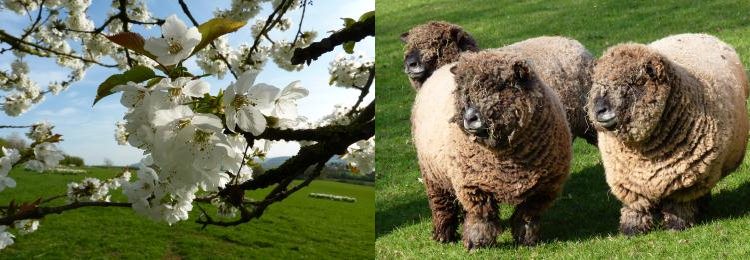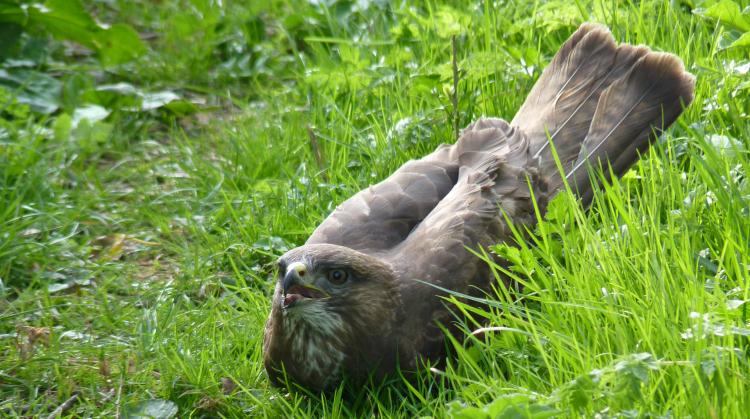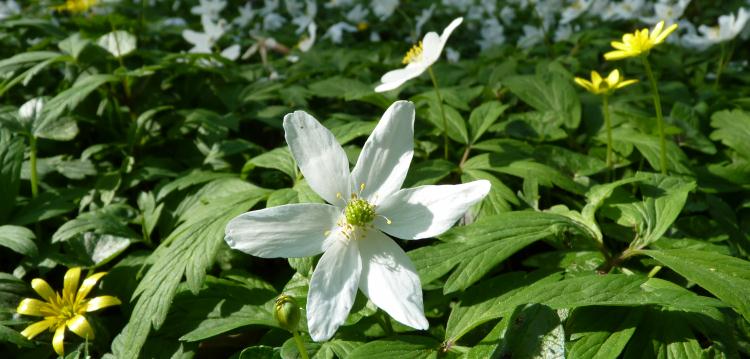This is a lovely circular walk through Herefordshire countryside, with excellent views throughout the walk. In some places the paths may not be straightforward to find, since some of the landowners plough across footpaths and don’t seem to be very good at maintaining signs. Hopefully the directions below will help you find your way!
SUMMARY
- Grade:Easy-moderate. Fairly long, could be muddy after rain. Fairly gradual ascent and descent.
- Length: 7.5 miles
- Key Features: Fantastic views, walking around an elevated area, and seeing 360 degree views including the Forest of Dean, Black mountains, Malverns,and the Cotswolds. We saw plenty of wildlife too, including a hare and a muntjac.
- Refreshments:Ross on Wye is 5 miles away, so it’s probably best to take snacks and a drink with you.
For an interactive version of this map click the image above or here
Route
Park in the village of Hole-in-the-Wall,which is about 5 miles north of Ross on Wye. Begin walking from the patch of grass in the middle of the village. Take the footpath to the left of this patch as you are looking at it (near the house), and then walk straight uphill along a two track lane, onto a path and continue through a metal gate.
Carry on, past a farm on your right, following the yellow arrows. Just before you get to Perrystone Hall, if you look right you’ll get an excellent view of May Hill, the highest point in the Forest of Dean. As you approach the hall, you go over a cattlegrid. Shortly after this take a track which forks off to the left, and this will take you to the road.
Go left along the road, being careful of the fast traffic. After about a third of a mile, turn into a minor road on your right. A few yards after you turn you’ll see a public footpath sign on your right, which you should follow.Take the path diagonally across the field, into a strip of woodland. Go straight through this strip, following a yellow arrow. Go straight across the field (which was unhelpfully ploughed when we went to re-walk this route). Go over a stile ( falling to pieces when we went). Head diagonally left over the next field, aiming for another stile marked with a yellow arrow. Then over another (ploughed) field, where you should see a chapel to your right (Yatton Chapel).
Turn right, when the path – such as it is- meets a larger track. Turn past the chapel and through a farmyard, following the yellow arrows. You pass two ponds on your left and then enter some woodland. Keep going along this route, and when the track turns sharply right, go straight on and continue straight until eventually you come to an asphalted minor road, where you turn left and then, after about 20 yards, go right at the public footpath sign.
If you look ahead and to the left you will see a vista of the Malvern hills. When you emerge from the trees just after you have turned right, looking ahead and to the left you will see May Hill again, and if you look right, in the distance are the Black Mountains. Go straight across the field, but do not follow the yellow arrow through a gate on the left at the end of this field. We tried, and found it almost impossible to find the path. Instead continue straight on until you come to a farm track. Turn left here and then almost straight away, turn right through the farmyard (you are on a public footpath – if you look behind you as you come to the track, you’ll see a yellow arrow showing where the path through the gate is supposed to emerge).
After about 20 yards go into a field ( ploughed again so path not apparent!). Head right and walk along the right hand side of the field. At the end turn left along the wooded boundary, and then go downhill towards the road.
When you emerge onto the road, cross over and take path on almost the opposite side of the road (by the Singing Stud). Cross the field diagonally towards a wooden gate, and follow the Ross ‘Walkers are Welcome’ yellow arrows.
Continue to follow the yellow arrows. When you reach an asphalted road, turn right and walk uphill for about 300 yards.
Just after Primrose Cottage turn left, and you’ll find yourself rather unexpectedly at a pottery, with a gallery that you might want to have a look at. Follow the footpath signs out of the pottery and shortly you will be on a green lane. Continue, following the footpath arrows, and when you reach a road go straight across. You will find yourself on a track, and after a short distance there is a wooden stake with about 4 different signs on it. Go left here, and take the downhill track to your right. You will come into a grassy valley. Follow this all the way down until at the extreme end toward the right, there is path which takes you the last few yards to Hole in the Wall.
The walk
Spring had come really early, we saw the remnants of the wild daffodils, but wooded areas were covered in wood anemones and bluebells were just emerging.
At Crossington farm there was some truly splendid apple blossom which could easily have made decorations for a particularly blowsy wedding cake. There were also some very unusual sheep – they looked as though they had a teddy bear amongst their ancestors. In fact they are a very old local breed, called coloured ryeland sheep. Very pretty.
Whilst we were walking on the green lane after the pottery, there was a sudden thump and a buzzard hit the ground in front us. We didn’t know whether it had stunned itself on one of the trees, or had perhaps been poisoned – although I think probably the former.
It was conscious and in the sort of protective pose that raptors adopt when they are sheltering some prey – so I suppose it may have caught something although we could see no signs of that. We decided to leave it and its baleful yellow glare in peace, hopefully to recover ( we did leave some water near it ), and edged very cautiously around it.
The last part of the walk was through a beautiful green amphitheatre, with a bluebell wood on our right, and green fields forming a long oval bowl. As we entered this area we surprised a hare, which sprang off with great alacrity. And just after we’d got over the surprise of nearly stumbling on a hare, we saw a muntjac heading for cover in the distance.


 Wye Walker
Wye Walker 